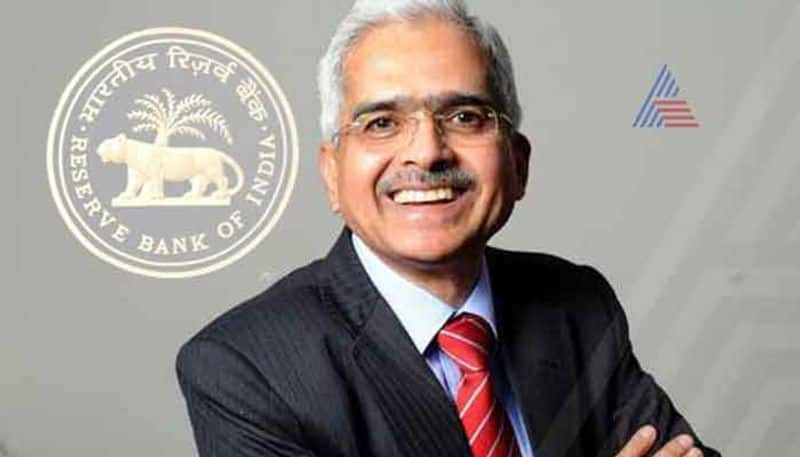Here's why the market is happy about the appointment as RBI governor of Shaktikanta Das, who has had a record of pushing government interest in the parleys with the central bank
New Delhi: As former economic affairs secretary Shaktikanta Das assumed charge as the RBI governor on Wednesday, the equity benchmark BSE Sensex advanced over 300 points in early trade. The NSE Nifty too rose by 98.50 points, or 0.93%, to 10,647.65. All the sectoral indices, led by banking, auto, and consumer durables stocks were trading in the positive zone.
In fact, right after the announcement of Das's appointment, the Sensex rose by 190.29 points to end at 35,150.01, after falling over 500 points in intra-day trade due to the electoral loss of the BJP in Madhya Pradesh, Chhattisgarh and Rajasthan. And the broader NSE Nifty rose 60.70 points to end at 10,549.15.
There is a reason behind this market euphoria. Brokers said investor sentiment got a boost after the appointment of the new RBI governor on hopes that it will now address the liquidity issue and could help public sector banks in their recapitalisation programme, besides helping in stabilising short-term investor sentiment.
Traditionally, the RBI has targeted inflation (absorbing surplus money in circulation aka liquidity) in the economy. To do so, one of the primary weapons it uses is raising the lending rate of banks, which prohibits companies from taking loans.
Unlike the popular perception, inflation does not necessarily mean price rise although the first may lead to the second.
Since inflation targeting is the brief under which the central bank functions, both Raghuram Rajan and Urjit Patel guarded their turf by differing with the Narendra Modi government that was pushing the ease of doing business. An important aspect of making business easy is easy accessibility of loans. Lower lending rates also means that the life of the urban middle class, increasingly running on equated monthly instalments against purchase of goods on credit, would have been easier. But this was not the concern of the central bank as an institution.
This is where Das pitches in. He had said in September that the government wanted to review the interest rate on small savings, like PPF and post office deposits, to bring them in line with market rates. Soon, these rates of interest that are not dictated by the RBI were eased to boost the economy.
Das had further raised the issue that with small saving deposits commanding an interest rate of 8.7 to 9.3%, banks have been reluctant to transmit the entire policy rate cut by the RBI to borrowers.
Now, sources say Das will work on the special liquidity line for the non-banking financial sector, which the RBI has resisted so far.
Further, the government wanted the RBI to soften the strict one-day default norm, especially in the case of power sector loans, a concern Das had voiced as a bureaucrat, while Patel kept resisting the move. Das, sources say, has begun working on it.
On Wednesday, as Das tweeted, "Assumed charge as Governor, Reserve Bank of India. Thank you each and everyone for your good wishes," finance minister Arun Jaitley termed Das as a person with the "right credentials" for the RBI top job.
"Das has been a very senior and an experienced civil servant. He has almost his entire career in the management of finances and economic management of the country both, when he was in the state government of Tamil Nadu and also when he was in the government of India in the ministry of finance," Jaitley said.
"I think, he (Das) has the right credentials. He has been extremely professional, has worked under various governments and has excelled himself. I am sure, in meeting the challenges before India's economy as governor of Reserve Bank, he will certainly act," the finance minister said.
One does not have to read a lot between Jaitley's lines to know why the government has chosen Das to succeed Patel. While on Tuesday, Das's forceful defence of demonetisation in November-December 2016 was recalled widely, MyNation had reminded readers about other highlights of his career as a bureaucrat.
Like a politician, Das is rather particular about optics. The IAS officer from the 1980 batch Tamil Nadu cadre once made news for slamming rating agencies like Moody's, Fitch and Standards & Poors' who were reluctant to upgrade India's sovereign rating.
Das worked extensively in finalising budgets for both the current government of the NDA and its predecessor, the UPA government, and thus knows exactly where the finance minister clashes with the RBI. Having switched the sides on the table, Das will no longer have to flag the issue of difficulty of borrowing for businesses before someone else in the central bank.
Sources say the new RBI governor is already exploring ways to make the six-member monetary policy committee (MPC), with three external members being noted economists, decide on the policy rate. Patel had turned the MPC stricter.
The only apprehension that the government has about Das, finance ministry sources say, is he should not turn out to be another Bimal Jalan, YV Reddy or D Subbarao who used to voice the Centre's point of view until they were bureaucrats but who turned into advocates of RBI autonomy the day they were appointed to the governor's post.
With inputs from PTI
Last Updated Dec 12, 2018, 6:49 PM IST











![Salman Khan sets stage on fire for Anant Ambani, Radhika Merchant pre-wedding festivities [WATCH] ATG](https://static-ai.asianetnews.com/images/01hr1hh8y86gvb4kbqgnyhc0w0/whatsapp-image-2024-03-03-at-12-24-37-pm_100x60xt.jpg)
![Pregnant Deepika Padukone dances with Ranveer Singh at Anant Ambani, Radhika Merchant pre-wedding bash [WATCH] ATG](https://static-ai.asianetnews.com/images/01hr1ffyd3nzqzgm6ba0k87vr8/whatsapp-image-2024-03-03-at-11-45-35-am_100x60xt.jpg)



